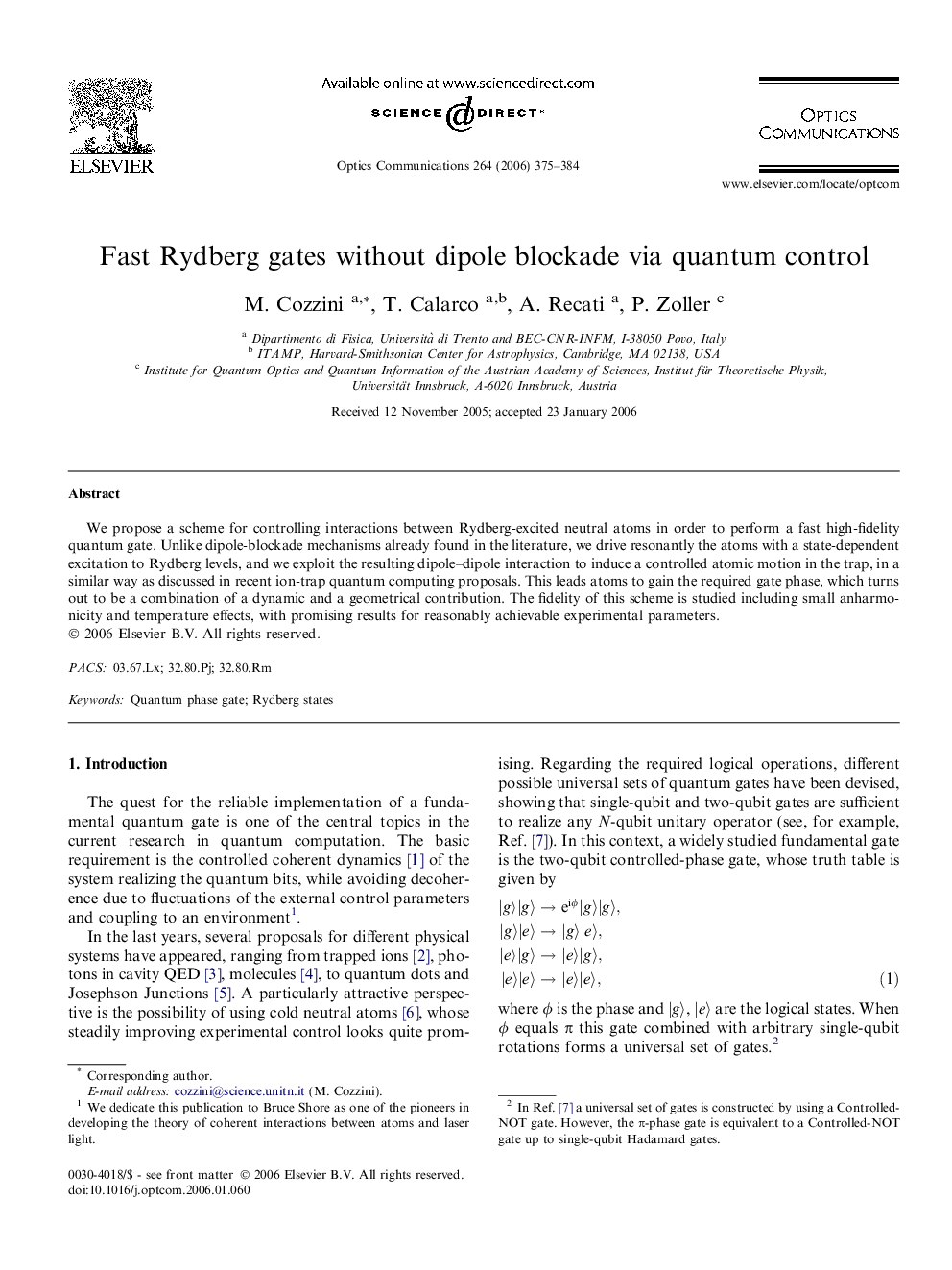| Article ID | Journal | Published Year | Pages | File Type |
|---|---|---|---|---|
| 1542483 | Optics Communications | 2006 | 10 Pages |
We propose a scheme for controlling interactions between Rydberg-excited neutral atoms in order to perform a fast high-fidelity quantum gate. Unlike dipole-blockade mechanisms already found in the literature, we drive resonantly the atoms with a state-dependent excitation to Rydberg levels, and we exploit the resulting dipole–dipole interaction to induce a controlled atomic motion in the trap, in a similar way as discussed in recent ion-trap quantum computing proposals. This leads atoms to gain the required gate phase, which turns out to be a combination of a dynamic and a geometrical contribution. The fidelity of this scheme is studied including small anharmonicity and temperature effects, with promising results for reasonably achievable experimental parameters.
